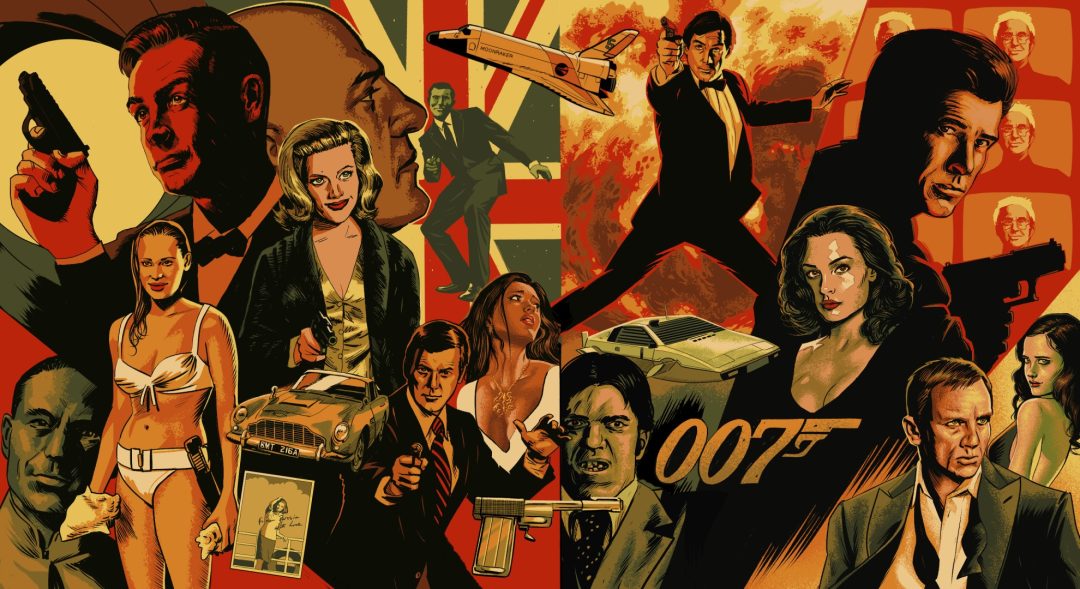The longest-serving Bond, at the time, had bowed out with A View To A Kill, and for the first time in 14 years, the role of Bond was up for grabs. Eon already had their man. Everything was lined up and ready to go, but there would be a last-minute hitch, and the producers would turn to a classically-trained actor with a long pedigree from the theater and a background largely in historical drama. The result was something unexpected that shook up the franchise and paved the way for a modern 007. Join us, as we prepare to scare The Living Daylights out of you…
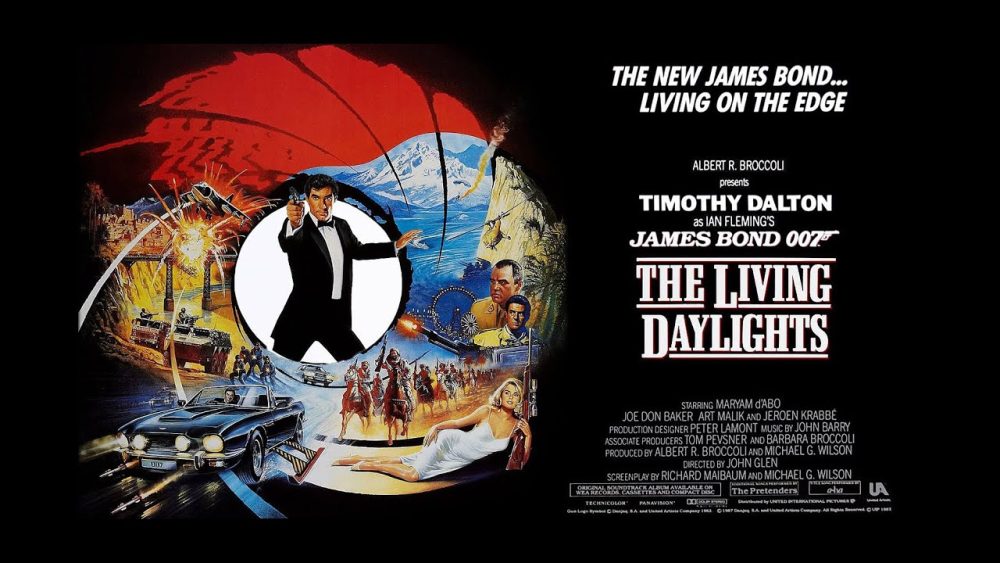
The Living Daylights – Behind The Scenes
After Roger Moore stepped down, the potential identity of a new 007 for the first time in many years was a big deal. It was the one role in all of movie-making that offered stability and potential longevity, along with the power of a recognized franchise doing most of the heavy lifting. Speculation was frenzied.
The producers already had a plan. They also had their sights on several options. They talked Sam Neil into auditioning, but he was never truly in the running. They had a very short list.
Timothy Dalton was a serious actor. He had enrolled at the Royal Academy of Dramatic Art and toured with the National Youth Theatre. He had appeared in Macbeth at the Old Vic and had a string of critically praised performances in period drama behind him.
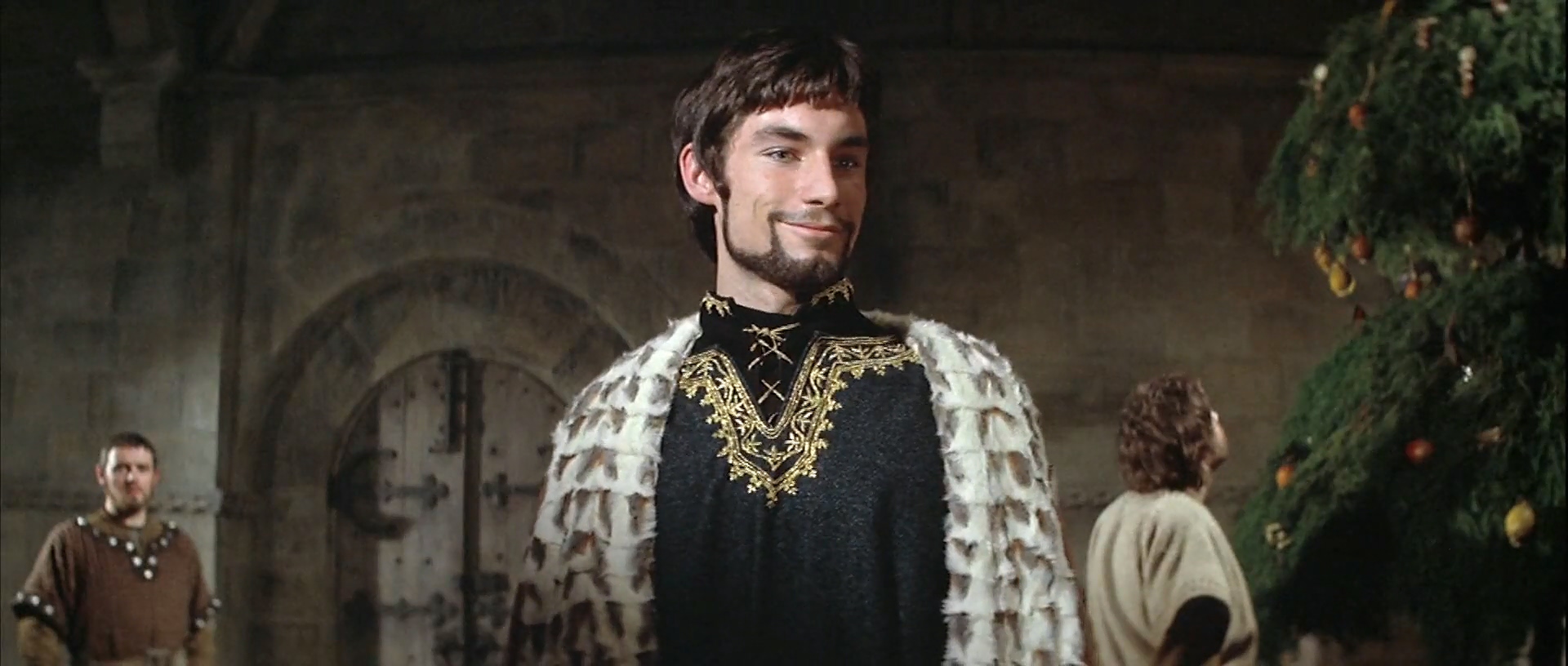
Dalton had been considered for the role of James Bond several times. The producers first approached Dalton in 1968 for On Her Majesty’s Secret Service after seeing his performance in The Lion In Winter.
He was approached again when Live And Let Die was in development and the Bond role was vacant. Being in his mid-20s at the time, he continually turned down the role and told the producers that he was too young. In a 1987 interview, Dalton said:
“Originally I did not want to take over from Sean Connery. He was far too good, he was wonderful. I was about 24 or 25, which is too young. But when you’ve seen Bond from the beginning, you don’t take over from Sean Connery.”
In either 1979 or 1980, during pre-production of For Your Eyes Only he was approached again, but did not favor the direction the films were taking, nor did he think the producers were seriously looking for a new 007, simply putting pressure on Moore to sign on. As he explained at the time, his idea of the character of James Bond was very different from where they were at this time in the movies.
In August 1986, Dalton was again approached to play Bond after A View To A Kill. A change in direction and tone was in store for 007 post-Moore, and it looked like Dalton’s view of the character would converge with where the producers wanted to take the franchise.
Dalton would soon begin filming Brenda Starr and agreed to take the role for The Living Daylights only if the Bond producers waited six weeks for Starr to wrap. The Bond movies were a fast-moving production line, and nobody told Cubby to wait.
The producers instead switched to another long-time potential candidate in Pierce Brosnan. He had been in consideration since he got to know the producers on the set of For Your Eyes Only, where his then-wife Cassandra Harris had a role.
His television show – Remington Steele – was being canceled and he was out of contract if not renewed, so would be immediately available. He was signed up and production prepared to start. When news of Brosnan’s hiring was leaked to the press there was a massive upswing of interest in Remington Steele, just completing what was to be its final run.
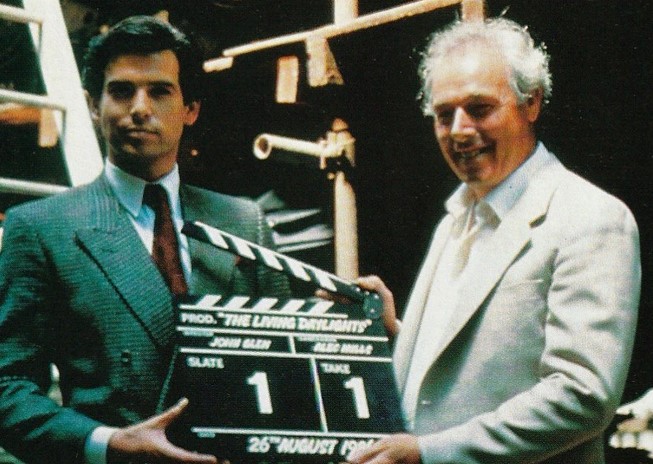
With barely hours to go until options expired, NBC renewed the show for another run. Brosnan was unable to escape his contract so he had to forgo the role of 007. His co-star Stephanie Zimbalist was also signed on for a movie, to play Officer Anne Lewis in RoboCop. She too missed out.
While all this was going on, Dalton had completed his commitments to Brenda Starr and was now available. With the clock ticking and no time left, the producers snapped him up with a three-movie contract. They finally had their man, and the next evolution of Bond could take place. Now they just needed a story.
The film’s title is taken from Ian Fleming’s short story The Living Daylights. The story first appeared in the collection Octopussy and The Living Daylights which was subsequently expanded to include The Property of a Lady and then 007 in New York.
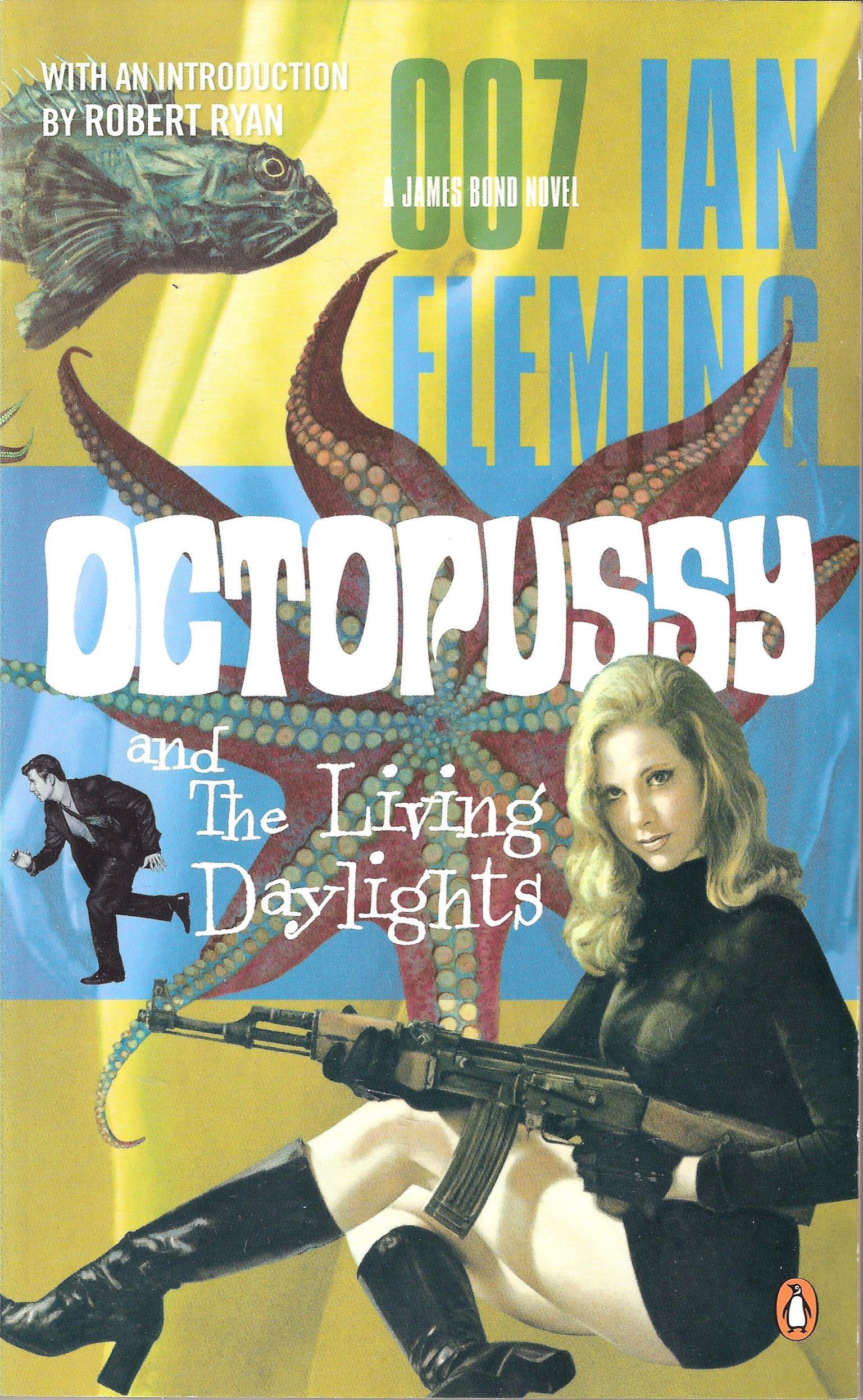
In the short story, Bond is thoroughly sick of his job and considering if his time in the service may be coming to an end.
He is assigned sniper duty to help British Agent 272 escape from East Berlin. Bond’s mission is to safeguard his crossing into West Berlin by eliminating a top KGB assassin codenamed “Trigger” who MI6 believes has been dispatched to kill 272. The crossing will take place at the lightly protected area of barbed wire and open space next to a concert hall.
In three days of watching and waiting, Bond sees a female orchestra arrive for rehearsal and leave each day. He takes particular notice of a beautiful blonde cellist.
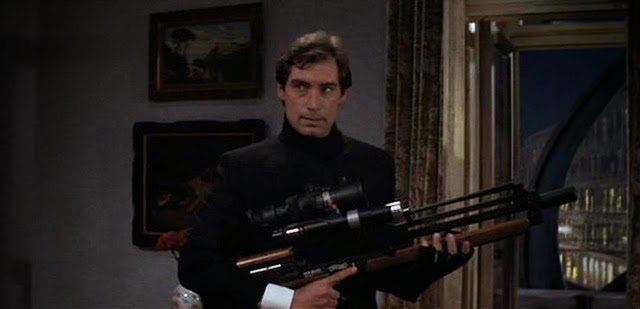
When, on the third day, Agent 272 appears and starts to cross the border, Bond sees Trigger get in position to kill him and realizes that it is the cellist. At the last moment he he makes a split-second decision to shoot her weapon instead of killing her, allowing 272 to reach safety.
Afterwards, Bond admits to his spotter that he did not even try for a kill shot only because Trigger had been a woman. The spotter is obliged to include this fact in his report and Bond wonders if his mission will be a failure, as Trigger lives even though Agent 272 is safe. Bond decides he does not care and might welcome M stripping him of his 00 number.
This short story was lifted in its entirety to form the first sequence of the movie. It also represents the last time a Fleming story would be used in such a way until Casino Royale in 2006. From this start, the rest of the story was constructed. The tone was considerably changed from the previous Roger Moore outings. Dalton was clear that he would only take the role if he could return the character to the Fleming roots.
Just like You Only Live Twice was followed by On Her Majesty’s Secret Service, Moonraker was followed by For Your Eyes Only, and Die Another Day was followed by Casino Royale, the 007 franchise would go through another of its periodical resets back to source.
To introduce a new Bond, the team wanted to find a way to make it still feel as spectacular as a Bond opening sequence should and include a signature stunt, but also signal the new, leaner, and harder-edged approach to this iteration of Bond. They settled on a parachute escape from a falling, flaming jeep. After filming most of the sequence on the same stretch of road in Gibraltar, they relocated to the famous Beachy Head cliffs in Southern England to get the shot.
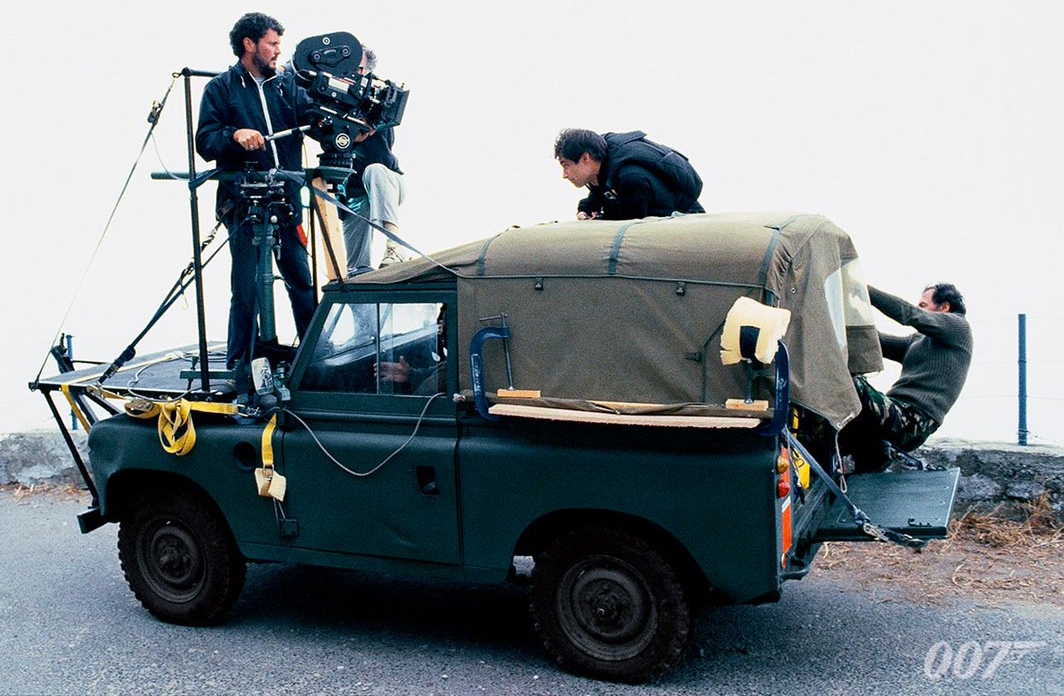
The technology and timing had already been perfected in repeated practice efforts including a dummy over the Mojave desert in the US by returning parachute stunt expert BJ Worth.
The glamorous beauty sunning herself on the yacht that Bond lands on is Belle Avery. Avery now has a career as a Hollywood producer and her projects include the Meg movies with Jason Statham.
In 1984 Maryam d’Abo had attended auditions for the role of Pola Ivanova in A View to a Kill. Barbara Broccoli included d’Abo in the audition process for playing Kara, which she later passed. They wanted a different kind of Bond girl who could complement Dalton’s new take on Bond. This was also at the height of the AIDS panic, so a decision was made that Bond would hop into fewer beds than before.
Originally, the KGB general set up by Koskov was to be General Gogol, however, Walter Gotell was too sick to handle the major role, and the character of Leonid Pushkin replaced Gogol, who appears briefly at the end of the film, having transferred to the Soviet diplomatic service.
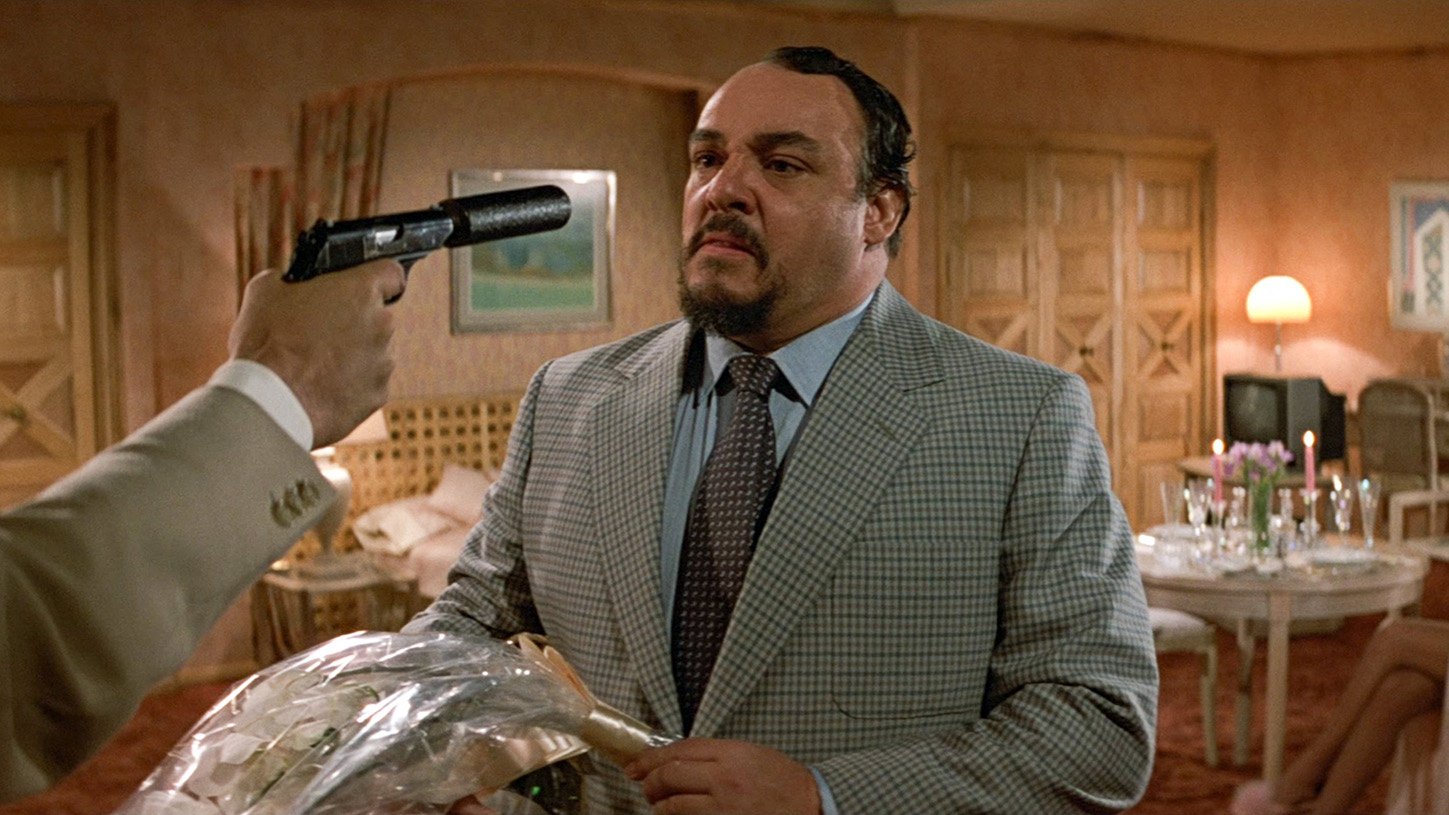
Bratislavan sequences were filmed in Vienna with the Volksoper, standing in as the exterior of the concert hall. and the tram scenes were filmed in Währing, Vienna. The Austrian Alps provided the settings for the Border chase and escape in the Aston Martin.
This marked the return of Aston Martin to 007 for the first time since 1969’s On Her Majesty’s Secret Service. Two different Aston Martin models were used in filming – a V8 Volante convertible, and later for the Czechoslovakia scenes, a hard-top non-Volante V8 saloon. The un-modified Volante was a production model owned by then Aston Martin Lagonda chairman, Victor Gauntlett.
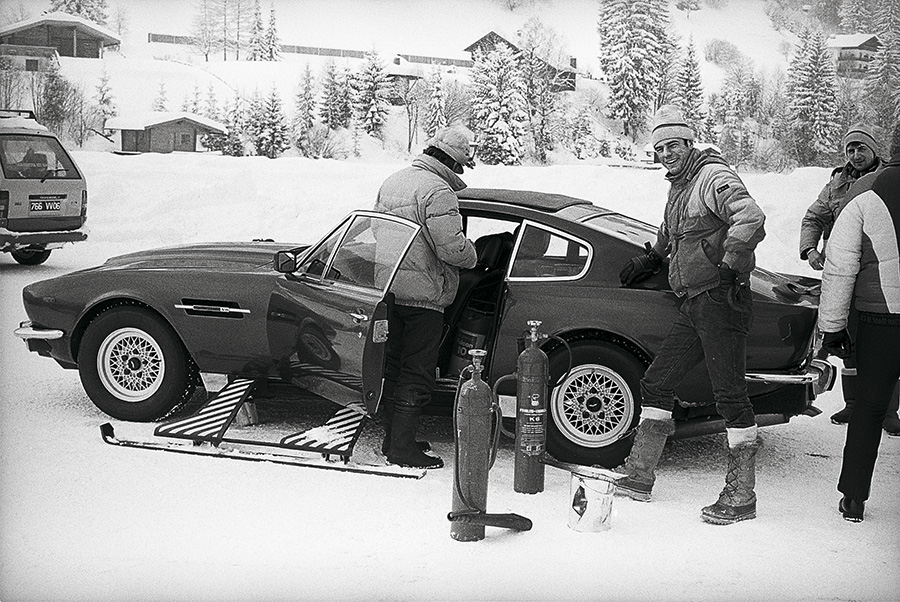
Worth and his team returned to the Mojave Desert to film the scenes of the fight on the cargo net hanging out of the back of the transport plane. Worth and stuntman Jake Lombard also doubled for Bond and Necros in the scenes where they are hanging and fighting on a bag in a plane’s open cargo door. Worth would later say this was one of the most challenging sequences he had ever filmed in his career.
The shooting moved on to Morocco, both for location shooting in Tangier and to double as Afghanistan. In Tangier, an elaborate sequence was shot which featured Bond escaping from a staged assassination by making use of a carpet, hung on a roof to dry, with telephone wires giving him the appearance of being on a flying carpet. This concluded with him dropping onto a motorcycle ridden by world-famous motorcycle stuntman Eddie Kidd, dressed as a local.
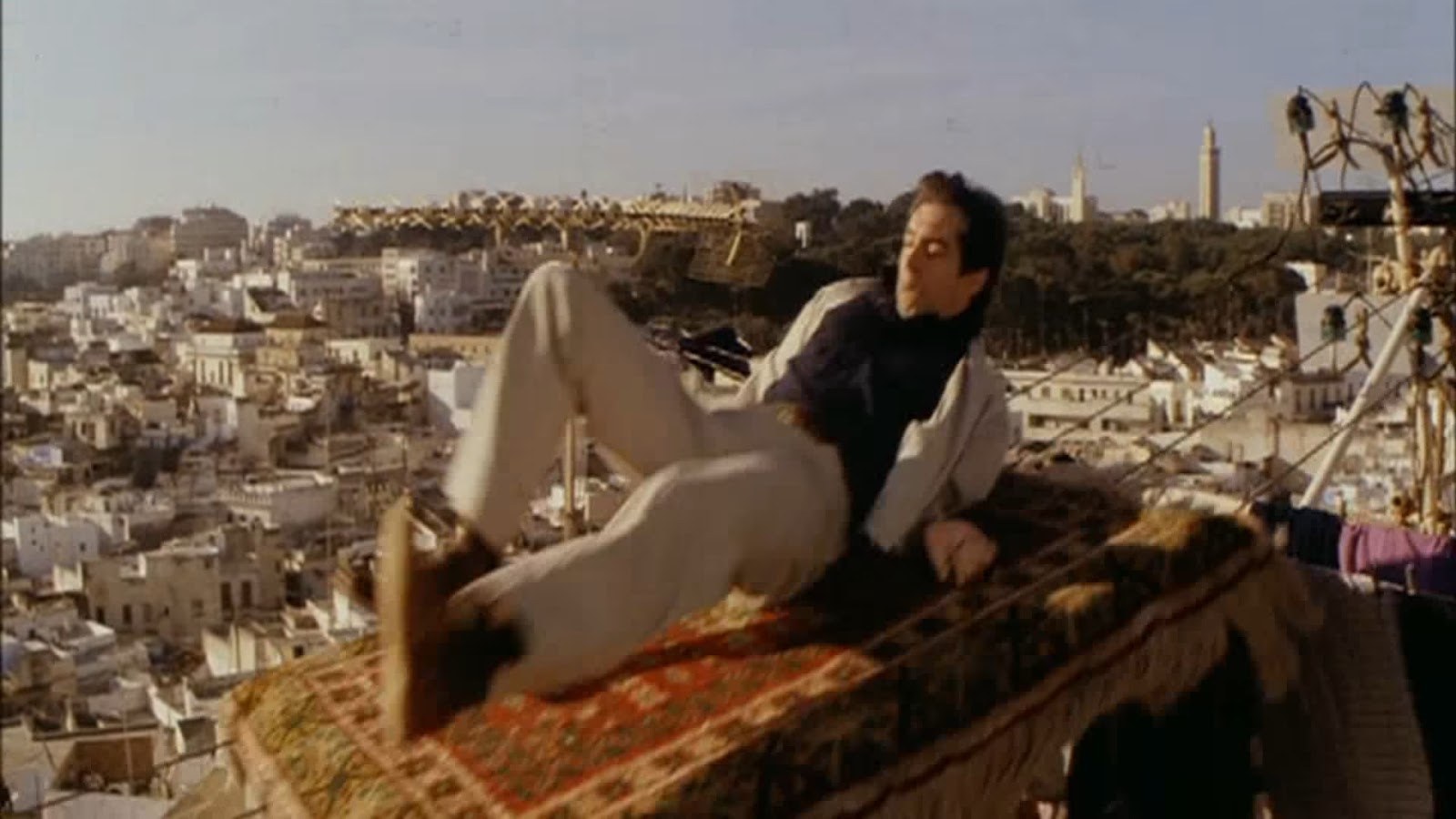
When the sequence was finished, it was considered too out of place with the tone of Dalton’s Bond and felt like it came from a Moore movie. The entire sequence was cut.
When the first unit was shooting at Pinewood, on sets standing in for the interior of the Blaydon safe house, the fight between Andreas Wisniewski and stuntman Bill Weston took three days to film. The macaw that appears in the scene is the same one that is featured in For Your Eyes Only.
Over the course of the three days it took to film this fight, Weston fractured a finger and Wisniewski knocked him out once.
As the various units shuttled between Morocco, Vienna, and London Maryam d’Abo recalls:
“…we were one big and happy family traveling and filming together for five months.”
She still speaks highly of her time on a 007 adventure today and appears in many documentaries about Bond and the franchise.
As filming started to reach its conclusion, interest in the first new Bond since the early 1970s began to reach a fever pitch. All over the world, newspapers and magazines started to report on the progress of The Living Daylights.
On one famous occasion, the then Prince and Princess Of Wales, Charles and Diana, visited the set. Perhaps as a harbinger of things to come, Diana smashed a prop bottle over her husband’s head and a delighted press carried the images worldwide the next day.
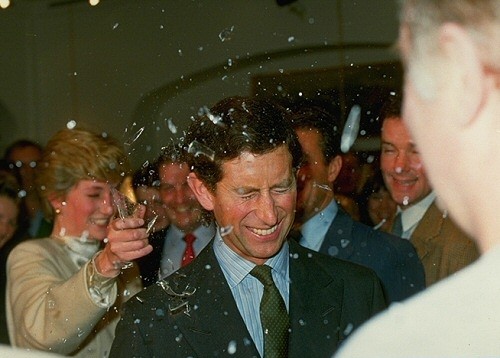
When it came to the music for The Living Daylights there was only one man who could introduce a new 007 to the world. John Barry. He worked with sequenced electronic rhythm tracks overdubbed with the orchestra, at the time pioneering some techniques.
The Pretenders, led by Chrissie Hynde, submitted a track and while Cubby liked it, he was keen to repeat the success they had with Duran Duran and A View To A Kill. Instead he turned to chart-topping group A-Ha. The group and Barry did not collaborate well as Barry attempted to integrate their theme into the soundtrack, resulting in two mixes of the theme song.
The song submitted by The Pretenders – If There Was A Man – was used as the love theme for the movie and the end title theme. Another track by the same band – Where Has Everybody Gone? – is used as Necros’ theme in the movie.
This was the final Bond film to be scored by composer John Barry. Throat surgery would keep him out of working on the next movie, Licence To Kill, and then a longer break in Bond movies would follow.
The Living Daylights was granted a Royal Premiere and The Prince and Princess of Wales attended the glitzy event in London’s famous Leicester Square on the 29th June 1987.
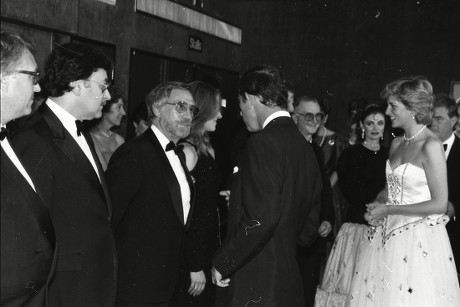
The abrupt change in tone divided audiences and critics. Older viewers, those familiar with early Connery and the books, loved the switch. Younger movie-goers wondered where the silliness had gone.
It didn’t stop the movie. Dalton’s first appearance as 007 was a financial success. It grossed more than either of the previous two Bond films with Moore, Octopussy (1983), and A View to a Kill (1985). For context of just how big it was back then, it out-grossed box-office rivals in the same highly competitive year such as Die Hard and Lethal Weapon.
The Living Daylights has since undergone a great deal of retrospective review. The Independent placed the film as the fourth best Bond movie, praising the tough, nervy edge Dalton brought to the franchise.
Roger Moore had previously refused to watch the movie as he did not want to be critical of his successor in any way. He watched the movie some years later and announced it was:
“…a bloody good movie.”
Modern reviews laud the film for bringing back realism and espionage to the film series, and showing James Bond’s dark side as Fleming had written him. Les Roopanarine, in a retrospective review for The Guardian, called the film his favorite Bond film, praising Dalton for:
“…bringing a more nuanced interpretation to the role, with his relationships evolving in a way never seen before in previous Bond films.”
The movie holds high scores on aggregate sites, including an A grade at CinemaScore. In a poll involving Bond experts and fans of the franchise, The Living Daylights was ranked the sixth-best Bond film. You could make an argument that Dalton’s insistence on tapping into Fleming probably paved the way for the future creative and tonal reset that would happen in Daniel Craig’s tenure, starting with Casino Royale.
Do You Expect Us To Talk?
Stark: I was one of those younger viewers. I had grown up with Ol’ Rog and I wondered where the fuck the hover gondolas and steel-toothed henchmen had gone. It didn’t take me long though, as I think it was this change in tone, that I found curious at the time, that spurred me on to start to really read a lot of Fleming and get into the details. It gave me a real appreciation of Dalton’s work here.
Wrenage: The Living Daylights is a curious film. Dalton is a fine addition to the Bond universe, but the movie itself comes off as somewhat bland. It doesn’t have the style of a Bond film. It looks more like a made-for-cable movie. This does not mean it is a bad film, however. It has a good number of things to like. In a way, it reminds me of Never Say Never Again. It’s Bond, but it feels like it was made by a different production company.
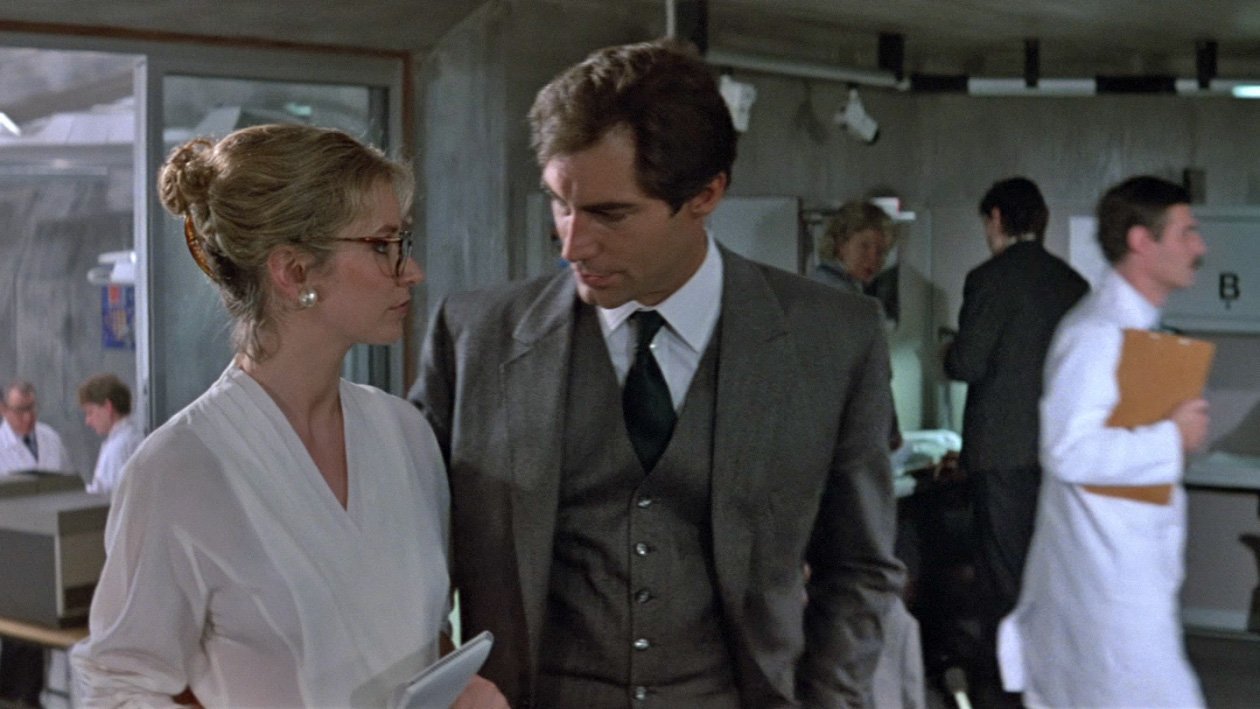
Stark: Yes. I guess I can see that. Of course, back then the idea of a reboot was unheard of, and even a prequel was rare. So it continues with the same Q and same M and the same aesthetic, just with a new Bond thrust into the middle of it. I can see how that could be discombobulating for some.
Also, things were such a production line by this phase that maybe they didn’t have a chance to stop, pause, and think about a new director. As a result, the look of the movie can sometimes look a bit flat. As if they lit it to be “gritty” and chose to use a film stock that would make it “gritty”? I am very fond of John Glen, but maybe this new tone needed new direction too?
Either way, today you can inject The Living Daylights straight into my veins. I love it!
Wrenage: Maybe Eon played it overly safe because they didn’t know how the audience would receive Dalton. Dalton does have an odd barrenness to his personality. He is obviously good at acting, but you kind of look right through him onscreen. About the only time I’ve really seen Dalton pop was his moustache-twirling turn in Hot Fuzz. On the other hand, maybe that is a good thing for a spy. They should blend in rather than draw attention to themselves. Dalton is also a better choice than Sam Neil. I’m glad Cubby put the kibosh on that option. Neil is too slimy for Bond.
Stark: You are right that it must have felt like a hell of a gamble at the time. In the 70s and 80s Bond had become a “thing” that was entirely of its own making. Anyway… we could be divergent again on this one. Let’s get to it…
Ranking And Rating
Let’s get to the ratings and rankings. Wrenage and Stark will give their opinions on the Bondian elements found in The Living Daylights and come up with a score and ranking to place them appropriately in their league table of all things Bond.
Bond
Stark: You do actually get the feeling this Bond could kill you. I don’t think Roger was “dangerous” past the end of The Spy Who Loved Me.
Wrenage: Timothy Dalton is probably the Bond most likely to beat his wife…and children. Dalton plays the part with a smoldering anger lurking beneath the surface that looks like it will lash out without warning. There are probably deleted scenes where Maryam d’Abo’s character had to explain a black eye or bruised bicep by skittishly relating how she walked into a door or fell down the stairs…twice.
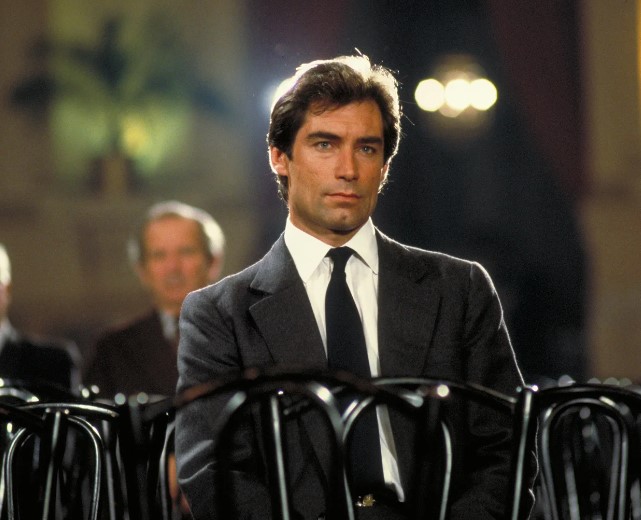
Stark: Dalton is very as Fleming wrote him. A dangerous man who isn’t always happy in his work. As opposed to a dapper guy in a suit who only kills people when they get between him and his next martini. A martini that he will drink in his flying space-speedboat alongside a woman he simply smiled at 30 seconds ago.
Wrenage: Dalton-Bond in a vacuum is a solid take on the character. Dalton is reminiscent of Patrick Stewart in delivery and manner, except not as annoying. Perhaps, this goes back to their Shakespearean roots. The seriousness Dalton brings to the role nicely separates him from the other Bond actors. His Bond fits right into any setting, whether he is attending a symphony in a tuxedo, beating up thugs in a fistfight or riding a horse in the desert. Dalton deserved another movie or two beyond what we got.
Stark: There is some history there. I think we will cover that in later instalments. You always got the sense of something nasty luring just beneath the surface with Dalton’s Bond. As I said, very Fleming-esque.
Bond Girl
Wrenage: Kara Milovy has to be in the running for most milquetoast Bond Girl ever. She really doesn’t bring much of anything to the film. She is simply a plot device for Bond to latch onto to lead him to the bad guys.
Stark: You liked Stacey Sutton last week!
Wrenage: Get Stacey Sutton’s name out of yo’ mouth! GET STACEY SUTTON’S NAME OUT OF YO’ MOUTH!
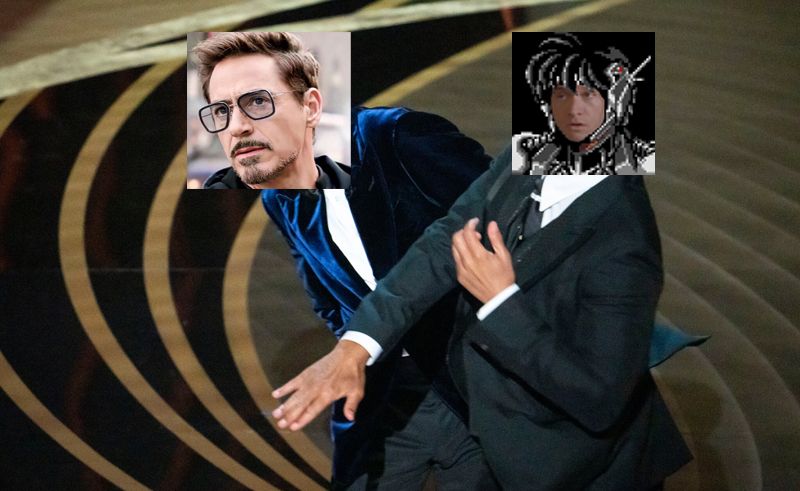
Stark: Sit down Wrenage. There is something I need to tell you about Tanya Roberts. Anyway…
I think Maryam d’Abo comes across as a really sweet, sincere person whenever I see an interview with her. I think they chose her because she was very opposite to many Bond girls, and therefore complements Dalton’s Bond. Also as per Fleming, she’s a classic (and literal) “bird with a wing down” of the books. I like that Bond gets a bit protective over her. But, yes, after Octopussy and Melina, Anya, and some of the others, there isn’t much to her. Maybe if she was a real sniper rather than Koskov’s tool?
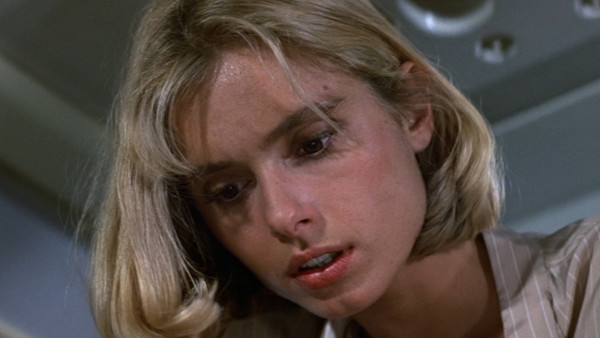
Wrenage: The only thing Kara is good at is playing the cello. A love story is supposed to exist here, I reckon, but one doesn’t really get a sense of chemistry between Dalton and d’Abo. The script doesn’t really help either. Kara loves Koskov enough to betray Bond, but then she also has no problem lip-wrestling with Bond. She is wishy-washy. Plus, her haircut makes her head look like it belongs in a church steeple.
Stark: You just described women in general mate (the scars of divorce take a lifetime to heal). As for Kara, she’s like the nice girl you want to hold hands with and take home to meet your Mom.
Wrenage: I remember the first girl I introduced to mom. Mother! Oh god, mother! Blood! Blood!
I’m sorry…where was I? Oh yes, some other ladies of note in the film include Caroline Bliss as a new Moneypenny. She is fine in the role but definitely not as good as Lois Maxwell. One doesn’t realize how great Maxwell was until she was gone. She brought a subtle scenery-chewing elegance to the role. Subsequent Moneypenny’s are just kind of there.
Stark: I found Bliss’ Moneypenny, through no fault of her own, frustratingly under-used. She’s a really attractive woman and I would have liked to have seen her do more, and appear more. Shame really that the whole Dalton-Verse, so to speak, only lasted two movies.
Wrenage: I also had a revelation this go around with The Living Daylights. Every time I watched the film previously, I’d think John Rhys-Davies’s mistress looked familiar, but I never placed her. This time I consulted Google. Of course! She is Virginia Hey, who was the warrior woman in The Road Warrior! Hey is hard to recognize without crimpled hair and shoulder pads.
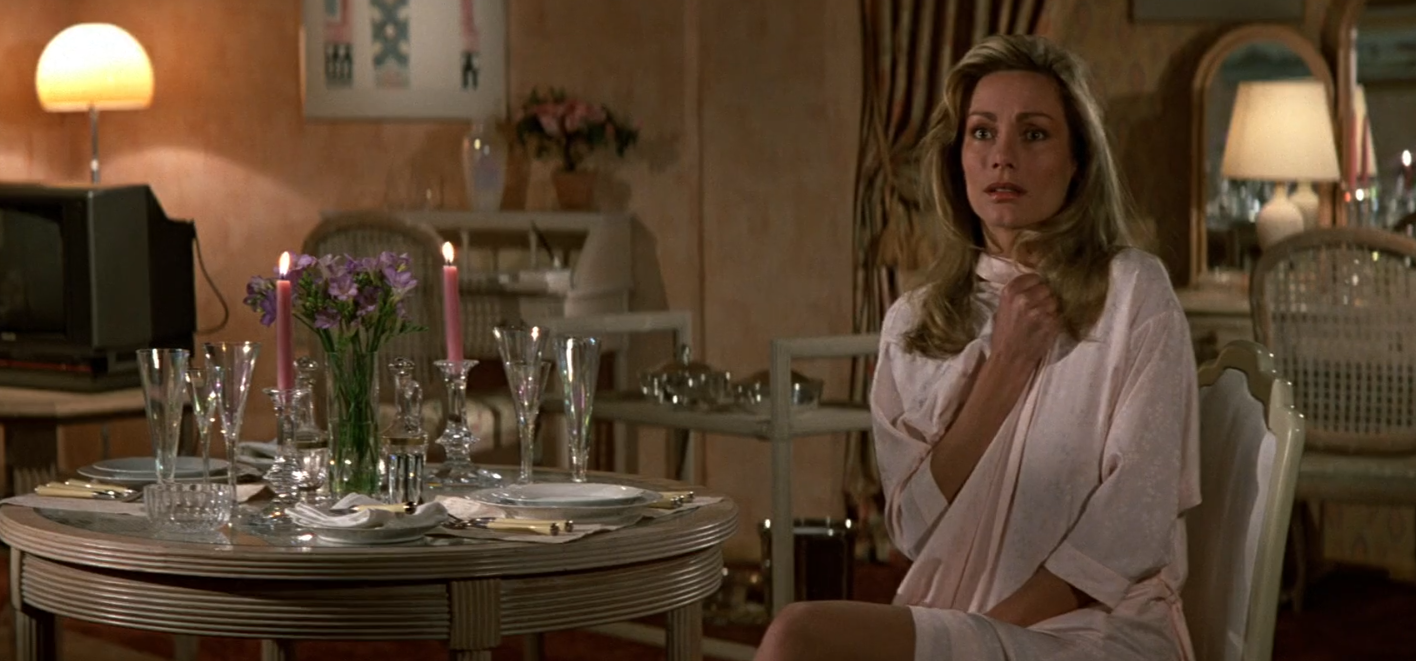
Stark: I did NOT know that! I completely missed it.
Wrenage: We should also mention Julie Wallace, Bond’s contact at the beginning of the film. She is 6’2 tall! That is a lot of woman. She has also appeared in The Fifth Element and Speed Racer.
Stark: Wallace was quite a big deal in the UK back then due to her debut in the title role in the BBC dramatization of Fay Weldon’s The Life and Loves of a She-Devil getting a Best Actress BAFTA nomination. Always with a keen eye on a wave to be ridden, Cubby signed her up!
Villains
Stark: The more I think about this, the more I like Koskov as a villain. His motivations are purely selfish.
Wrenage: It seems his plan is to get John Rhys-Davies assassinated, so he can get the man’s job?
Stark: Not quite. He’s been embezzling KGB funds and is avoiding arrest by defecting, then faking his abduction to disappear. He just wants to get rich by using the stolen funds to buy opium, which he will then use to fund Western arms purchased from Brad Whittaker, which he will then sell again for an even bigger profit.
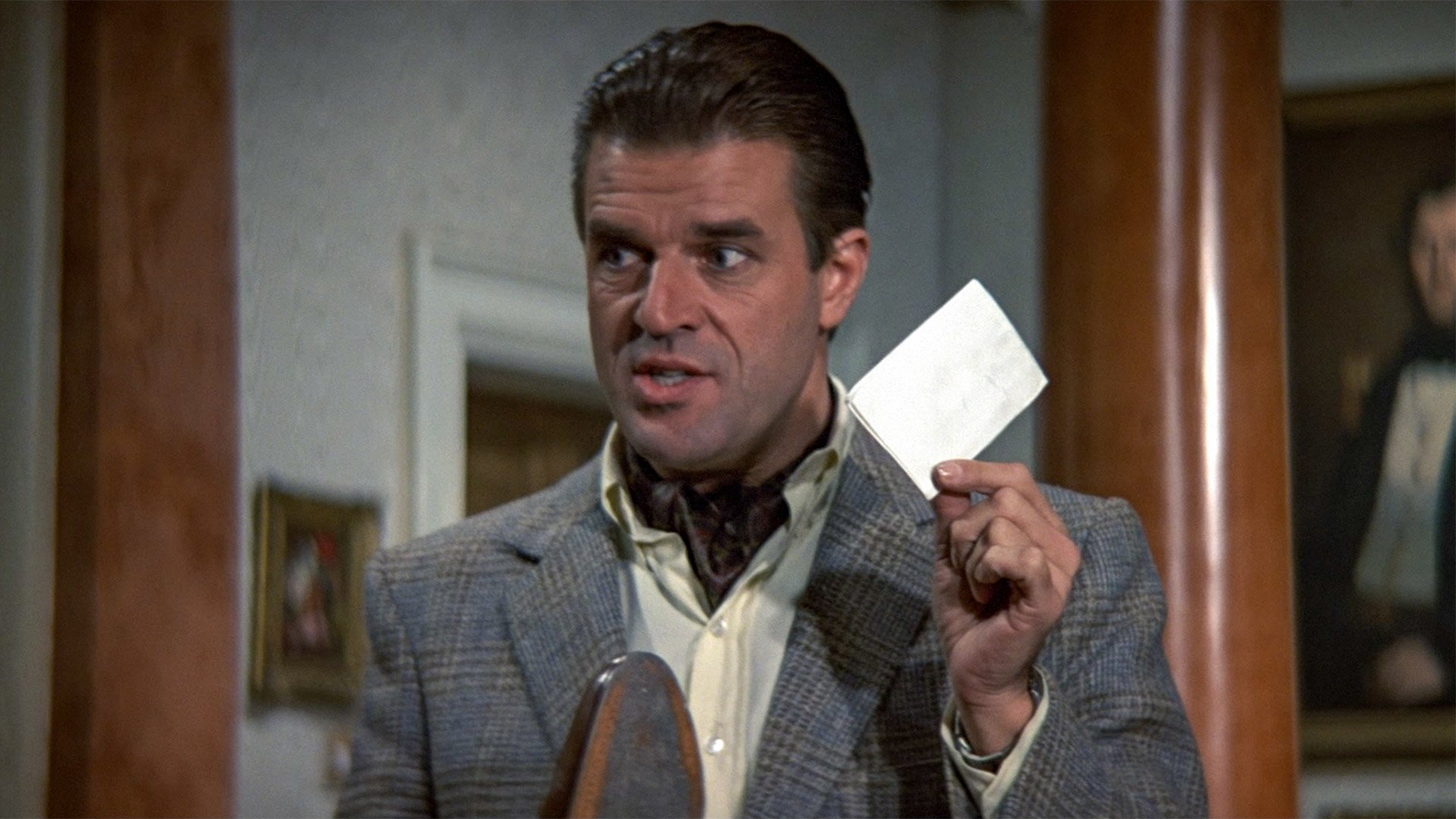
Pushkin is in his way, and after him, so Koskov was trying to trick the Brits into assassinating Pushkin with the whole “Smiert Spionam” lie simply to clear his own baffles and get away with it. He’s basically a thief, a drug dealer, and an arms trader in one. He just wants to get rich. After earthquakes in Silicon Valley, space stations, and submarine civilisations, I can dig that.
Wrenage: Ah, I was under the impression that Whittaker was the party doing the drug deal. Whittaker got the money, and Koskov got John Rhys-Davies ventilated.
Stark: It takes a bit of following. Koskov is using the Soviet funds to buy a massive shipment of opium, intending to keep the profits with enough left over to supply the Soviets with their arms (the legitimate purpose, sans opium in the middle) and buy Western arms from Whitaker which he can then sell on. Or at least that is my take. Shit. Now I am doubting myself and I will have to rewatch.
Wrenage: While Dalton’s Bond is good, the villain element lets him down. Jeroen Krabbe is certainly greasy as Koskov, but his character is not that interesting at the end of the day. He doesn’t do anything that truly makes the viewer want to see him get his comeuppance.
Joe Don Baker is better, at least. His Whittaker is a soldier-of-fortune-wannabe with delusions of grandeur when it comes to his military acumen. That is fun, but his plan is also a bit boring for this kind of film, and he enters the movie a bit too late. By the time he rolls around, the view has invested in Koskov as the puppetmaster.
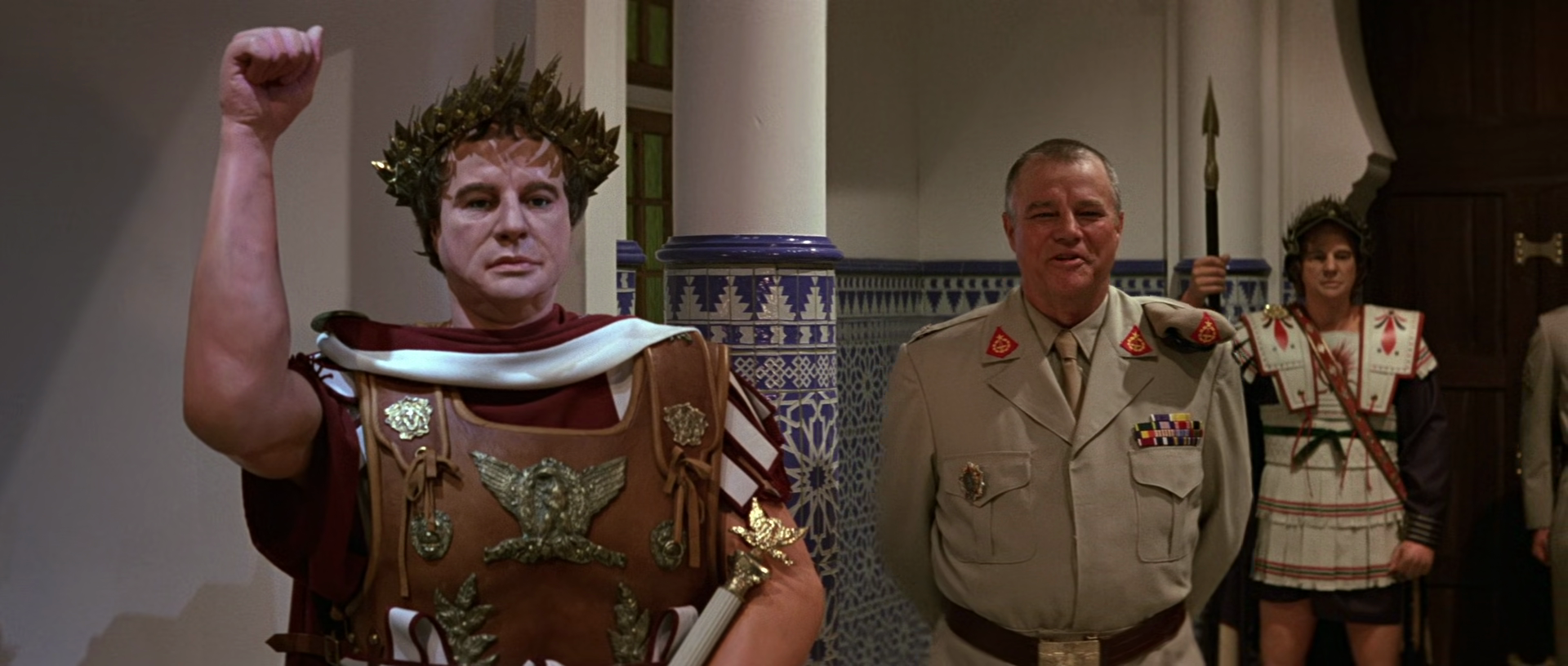
Stark: I go the other way on Whittaker. He is set up as the sort of “Big Bad” but never really does anything. It is Koskov who does all the running. So I end up wondering what the point of Whittaker is? If there is a weakness it does feel like they made things too complicated, plot-wise, in an effort to be more grown up this time around.
Wrenage: Meanwhile, Andreas Wisneiwski as Necros is the true engine that drives the villain side of the equation. He at least gets to do proactive stuff. I enjoy his explosive milk bottles, and I love the fight he has with the nameless agent in the kitchen. That was a great touch to have a character you would expect to just get conked on the head put up a good battle.
Stark: I enjoy Necros in this. He’s very much the henchman archetype but then gets a lot more than just a henchman job to do. There is a hint of something in the scene around the pool, and again in Tangier, where you think he might be more committed to idealism than Koskov. Maybe a plot point that wasn’t developed.
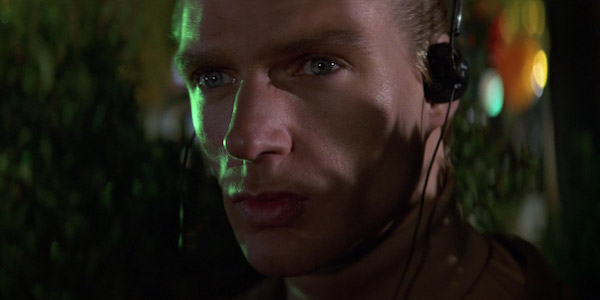
Wrenage: Wisneiwski has a great look about him…kind of Eurotrash Nazi. As I watched, I realized he would have made a great KGBeast in a Batman movie. I’m not sure what the creators of KGBeast were thinking with the S&M outfit they gave him in his original appearance, but Wisneiwski could have done that character proud. Despite Wisneiwski’s few credits, he has some BIG movies on his list.
He got to get killed by Bond and John McClane and be in two Mission: Impossible movies.
Stark: He looks a bt like Daniel Craig in that image above. I like how, in M:I, he plays the same character as in the first movie and he and Hunt acknowledge each other. A little touch.
Plot
Stark: Bugger… now I realize I said all I needed to say about the plot when outlining Koskov’s motivations in the previous section. Well… this is awkward. Well, over to you Wrenage.
Wrenage: The Living Daylights is not spectacular in the plot department. It is basically Bond following breadcrumbs until a finale that kind of comes out of nowhere. All of a sudden you find yourself in Afghanistan, witnessing a drug deal, and you look around and think…huh? What am I doing here and who are these people? Where did the bad guy from True Lies come from? Oh well, let’s blow stuff up, I guess…
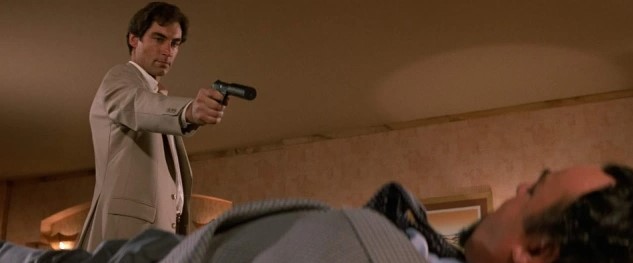
Stark: I disagree. The breadcrumbs stuff is cool. It shows a bit of detectoring, chasing down a lead to find out what is really going on, before he pulls that trigger on Pushkin. Bond smells a rat, and before he kills Pushkin he wants to check a few things out. The rest flows from there.
Of course, you really can’t talk about The Living Daylights without talking about the Mujahideen. It sits there in the rarified air with Rambo III as movies that happened while they were still our allies against the Soviet expansion before they went all Taliban.
Action Sequences
Wrenage: When Dalton is doing regular things, the action is fine. Yet, some stuff seems a bit overthought. For example, I’m not sure why Bond’s car needs outrigger skies. When are they ever going to come into play, other than when he is conveniently in a snowy landscape and gets a flat tire? They are trying too hard with stuff like that. Likewise, when he drives around the lake with a building covering the car. In every other movie, Bond would crash his car right through that shack. In The Living Daylights, the building sticks to the car for…humor maybe? If so, it isn’t funny. Regardless, it is nice to see An Aston Martin again.
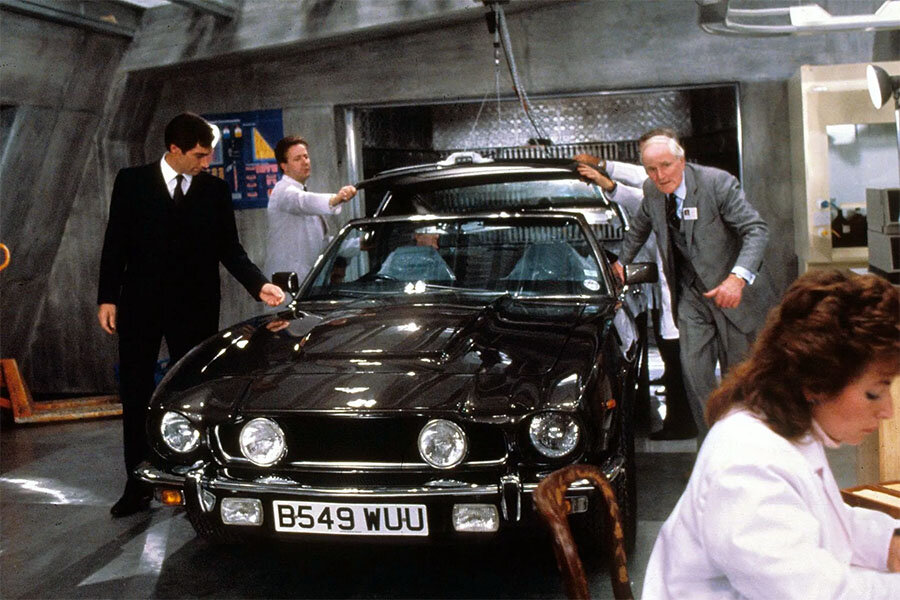
Stark: I love the Aston in this. I like that everything is basically like-for-like with Connery’s DB5, just updated. And nobody can deliver the line “I had some optional extra installed.” with the kind of grim determination Dalton has at that moment. It is still a funny line, but it hits completely differently in the delivery. Same as after Saunder’s murder, when he states “Yeah, I got the message.”
I like the stripped-back nature of a lot of things. The whole opening sequence is very Cold War, yet the Harrier jump jet rising from just over the border is very Bond… but not at all over the top. From then on the action scenes are small and quick until the Afghanistan set-piece, but the movie never really drags. That is an achievement.
Wrenage: The fight on the cargo bags hanging out of the plane at the end is a lot of fun. That stunt is pretty much spot on, clever and with a good demise for a villain. Then it has a nice punctuation with Bond looking for the bag that contains the bomb among all of the other bags scattered about the plane’s fuselage.
Stark: Even in a stripped-back Bond movie they still top it off with a stunt sequence that I think is one of the best of the series and still stands out today. The fight on the cargo net out the back of the plane really works with Barry’s music.
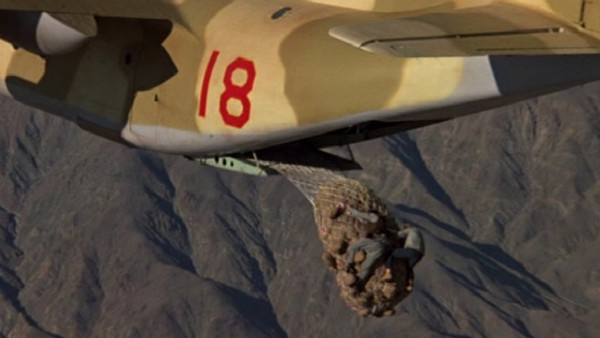
Pre-Title Sequence
Stark: I like this opening sequence. It does exactly what it says on the tin. It introduces a new 007. It does it with just enough spectacle but never feels like they are trying too hard. It is also short, punchy, and straight to the point. Topped off with a decent gag – “Better make that two!”
Wrenage: This is not a spectacular pre-title, but it is a solid pre-title. BJ Worth and the team return yet again to do parachute work. That is probably their best aerial photography done in a Bond movie, maybe because they could just jump out of the plane instead of having to beat each other up on the way down. The pre-title also serves as a good introduction to a new Bond.
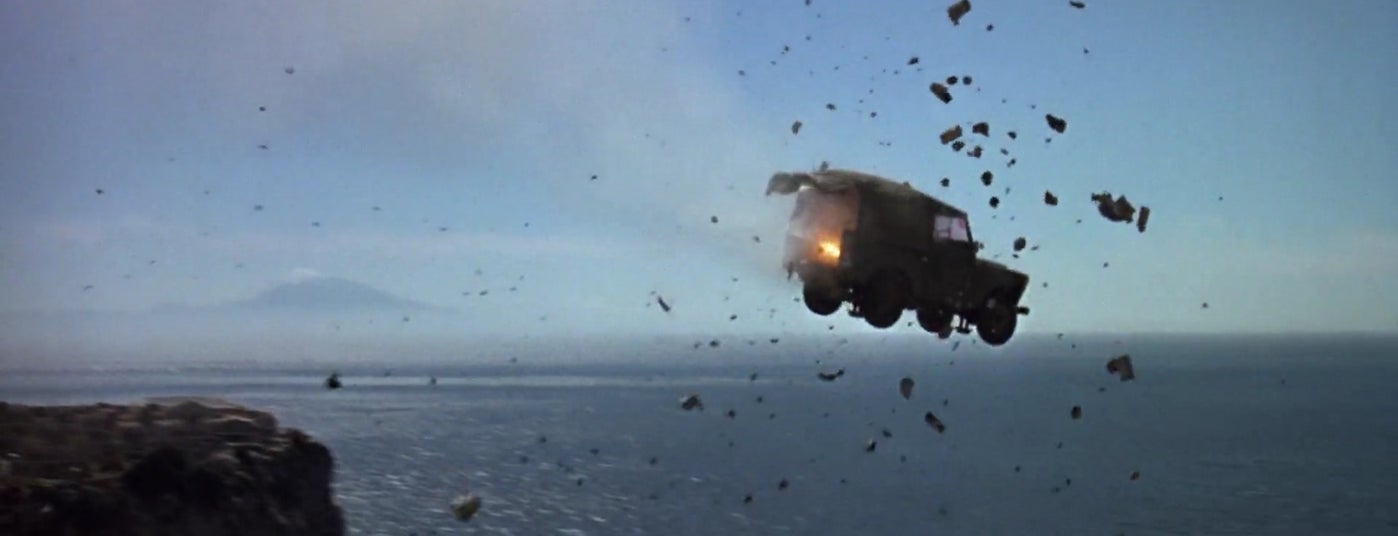
Stark: I do like the stunt escape from the jeep, and the assassin’s scream, truncated by the explosion.

Theme Song
Stark: You can’t quite describe how massive A-Ha had been in the mid-1980s. Take On Me, Hunting High And Low, The Sun Always Shines on TV. They were a big deal. Maybe that “Why don’t you get somebody decent?” challenge from Duran Duran was still ringing in Cubby’s ears, as this is trying to capture the same vibe as A View To A Kill. It largely succeeds as well.
Wrenage: Call me crazy, but I think I might like The Living Daylights by A-Ha just a little bit better than A View To A Kill by Duran Duran. They were clearly trying to equal the success of the last theme song, and they were on the right track. It’s another good 80s track.
Stark: I think that drum kick in A View To A Kill just edges it, but this is close. A View To A Kill and The Living Daylights as the best Bond themes since at least Carly Simon? Probably since Paul McCartney and Wings for Live And Let Die? It could be possible to make that argument.
Wrenage: As good as the theme song is, unfortunately, Barry doesn’t equal his work on A View To A Kill with the rest of the score.
Stark: Barry was very much into an experimental synth phase. I like the soundtrack, but it does kind of anchor it into the 80s whereas the score for A View To A Kill is kind of timeless.
Wrenage: The only musical sting I remember from The Living Daylights is when they hit the Bond theme with that first shot of Dalton. That’s the real stuff, baby!
Stark: Great introduction. Just a turn and a look.
X-Factor
Stark: It still has that X-Factor despite being a so-called lean Bond. It’s still got all the bells and whistles. There is the gadget-laden Aston, it is globe trotting. There are stunts. There are women.
Wrenage: A new Bond is a notable X-Factor and makes up for a lack of other intangibles.
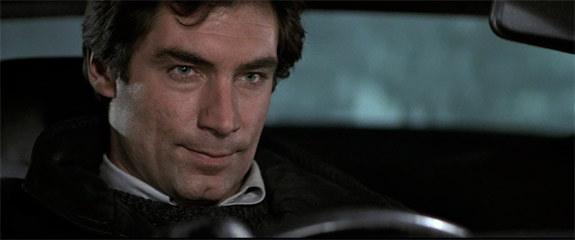
Stark: I can still remember Moore’s retirement, the Brosnan “announcement” and then Dalton being unveiled clearly. I remember the premiere being on TV. This was a big deal at the time. Unfairly, I still have a problem with a Bond called Timothy though. This is a “me” problem.
I will say this – the confrontation between Pushkin and Bond in the Tangier hotel is some of the best Fleming ever put on screen, and it wasn’t even written by Fleming.
Scoring Breakdown
| Stark | Wrenage | |
| Bond | 9 | 7 |
| Bond Girl | 5 | 4 |
| Villain | 6 | 4 |
| Plot | 6 | 5 |
| Action Sequences | 6 | 5 |
| Pre-Title Sequence | 7 | 7 |
| Theme Song | 8 | 9 |
| X-Factor | 7 | 6 |
| TOTAL | 54 | 47 |
Stark: With my big-boy Fleming pants on, I score lots of this very highly. I have always liked Dalton as Bond and revisiting this and giving it a structured and critical appraisal just makes me sad we didn’t get more of him.
Wrenage: The Living Daylights is not a bad James Bond film, but it is oddly devoid of personality. By comparison, look at one of the lower-tier Bond films like Diamonds Are Forever. Say what you will about Diamonds Are Forever, but it doesn’t lack personality. It seems they overcorrected with this one. In their quest to reset the franchise, they blanched it of pizzazz. The Living Daylights maybe belongs smack in the middle of all of the movies as the most perfectly, comfortably average.
Stark: You are comparing The Living Daylights with Diamonds Are Forever? Jesus. All that Stacey Sutton indulgence from the last installment has warped you. I think we really need to get you some help. Maybe we should have waited for Moore to fade further from memory.
Overall Rankings
Even the third tier is filling up nicely as we get properly deep into our Bond run. A View To A Kill was the latest entry into tier 3. Then we were hit with Wrenage’s stunning revelation last time around that Dr. No was the victim of a scoring anomaly lost to the mists of time. Will Stark get his demand met for a recount? Will this change the standings? Does anyone really care?
Until we can answer these questions, let’s see where The Living Daylights ranks when we do the math:
First Tier:
From Russia With Love (61.5)
On Her Majesty’s Secret Service (61)
The Spy Who Loved Me (59.5)
Goldfinger (54.5)
Thunderball (53.1)
Second Tier:
Live and Let Die (53)
You Only Live Twice (51.5)
For Your Eyes Only (51.5)
Octopussy (51)
The Living Daylights (50.5)
Third Tier:
Dr. No (49.5)
Moonraker (48.5)
A View To A Kill (48)
The Man With The Golden Gun (38.5)
Diamonds Are Forever (34.5)
Fourth Tier:
(Empty)
That’s A Wrap
Stark: I fundamentally don’t want to accept The Living Daylights at the bottom of the middle tier like that. This is simply wrong! But, this is the scoring method we agreed on upfront so under the terms, I guess I have to shut up and take my medicine.
Wrenage: Trust the process! It’s like the results for A View To A Kill. My guilty-pleasure center insists it belongs at the top of the charts. Yet, there it sits, only above The Man With The Golden Gun and Diamonds Are Forever once it is put through the process. Plus, The Living Daylights is only out of the first tier by a measly 2.5 points. It speaks to the level of consistency Bond was nailing throughout the 1980s.
Stark: It is getting really interesting now. There is a good base to compare against for context, and we are getting into movies that are fresher in our memories. For me, The Living Daylights and Dalton is where I consider “Modern Bond” to have started. Modern Bond that now continues through Brosnan to Craig and whatever comes next. It is kind of the line in the sand separating it from “Old Bond” of Connery, Lazenby, and Moore.
Wrenage: That is a reasonable take. The series has a definite flip-of-the-page point to it once the Connery/Moore era passed. For whatever reason, Connery and Moore seem more connected to each other than any of the other Bond actors. Connery built the foundation, and Moore solidified it into an institution. Everyone else seems to be standing on their shoulders and enjoying the benefits.
Stark: So what exactly are we doing to do about Dr. No?
Wrenage: I reckon you could average out all of the theme song and pre-title scores and then give Dr. No those numbers for its blanks.
NEXT TIME… The first new guy in more than fifteen years has got his debut out of the way, and it’s time to continue the radical change of mood in Licence To Kill.
Meanwhile, check out the rest of our Bond On series as we take a walk through all the Bond movies in order: Dr. No, From Russia With Love, Goldfinger, Thunderball, You Only Live Twice, On Her Majesty’s Secret Service, Diamonds Are Forever, Live And Let Die, The Man With The Golden Gun, The Spy Who Loved Me, Moonraker, For Your Eyes Only, a two-way Battle Of The Bonds for Octopussy and Never Say Never Again. Last time we looked at A View To A Kill.
Check back every day for movie news and reviews at the Last Movie Outpost


